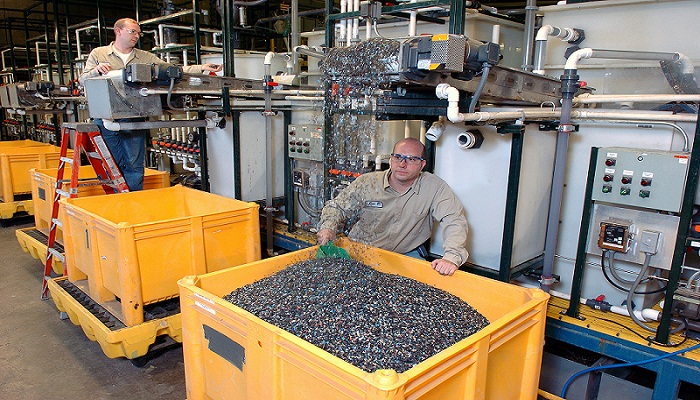Ken Research announced its latest publication on, “
Electrical and Electronics Retailing in Belgium-Market Summary & Forecasts; Comprehensive overview of the market, consumer, and competitive context, with retail sales value and forecasts to 2020”
, offer insights on the changing trends and key issues within the Electrical & Electronics Retail Market in Belgium.The publication includes an insightful analysis of changing consumer behavior, changing economic and demographic factors, technology innovations, leading domestic and international players, distribution channels and regulatory framework within which the Electrical & Electronics Retail Market in Belgium operates. The analysis of the aforementioned trends for major Electrical & Electronics categories:communication equipment, computer hardware and software, consumer electronics, household appliances, photographic equipment; for their sales through leading distribution channels such as Convenience Stores;Electrical & Electronics specialists;Hypermarkets, supermarkets and hard-discounters; Value, variety stores and general merchandise retailers; General retailers;Other Specialist retailers, Value retailers; Online; has been done from 2010 to 2020.
Economic Environment of Belgium
Belgium is a federal state with three culturally distinct regions: Flanders, Wallonia, and Brussels; with substantial economic power allotted to each of the regions. It is one of the highly industrialized countries in Europe. Except Luxembourg and Ireland, its economy is one of the most open economies of the world having strong integration with its three main neighbour countries: Germany, France, and the Netherlands. Brussels serving as headquarter of NATO & EU; makes Belgium a prominent member of EU, and also of OECD and WTO; thereby compensating the small size of the country by its substantial global position. After having contracted, currently, Belgium’s economy is recovering reaching 1.3% GDP growth rate both in 2014 and 2015 on account of increased exports and investments in Belgium.

Looking at the macroeconomic scenario of the country, Belgium is home to 11.2 million people. With USD 458.651 billion, Belgium’s economy globally ranks twenty-third as per nominal GDP and with USD 43,629, the global rank is seventeenth as per GDP per capita. The sector wise contribution to GDP includes approximately 73% from its strong & huge service sector employing most of its skilled workforce, followed by industry (25%) and agriculture (2%). Being poor in natural resources, imports are basically dominated by raw materials and processed for exports. Exports are dominated by electrical equipment, vehicles, diamonds, and chemicals and contribute to 80% of the GDP. The country provides for an open economy with low barriers to overall foreign trade and investment. Three-fourth of Belgium’s foreign trade is with other EU countries. Foreign investment in the country amounts to USD 4956.7 million. With low average unemployment and improving inflationary conditions, the business environment has become attractive for market players. However, red tapism as a disincentive to foreign investment, high public debt, uneven economic recovery along with structural weaknesses such as rigid labor market and high taxation, holds back the economy from growing at its full potential.
Brief Overview of the Electricals & Electronics Retail Market in Belgium
Gradually, the consumer lifestyle has become time-tight urging the need for convenient and fast electronic appliances. These electrical appliances have become part and parcel of consumers’ life and are present in various forms. They also play a vital role in the smooth functioning of industries and hence contribute to the economy. As a result, with improving macroeconomic environment all over the world and progressive advancement of technology through investment in R&D, the product base for electronic items have expanded to meet the surging demands; and this has led to a boom in the global electronic products market.
Unfortunately, economic contraction in Belgium has hit the Electrical & Electronics retail market badly. As a result, the market has witnessed significant slowdown. Belgians are highly fond of latest gadgets and smart devices. Still economic stagnation has led to reduced sales growth, especially in the case of premium & expensive electronics item. However, as the economic recovery has started, consumer confidence is boosting up. With growing GDP, rising disposable income & falling unemployment, the market outlook is optimistic.
Looking in detail within the Electrical & Electronics retail market in Belgium, the market holds a nominal share of the overall retail market. In 2015, it held a market share of 7.7%. Among various electronic items, consumer electronics and appliances have been the most demanded product.A mix of domestic and international retailers serves the Electrical & Electronics market demand.Also, the market is characterized by a high level of price-competition among market players to achieve maximum market penetration.Electrical and electronics specialists, accounting for 59.5% of the sales, dominate the distribution channels.However, with consumers turning to online channel, sales from offline stores have declined. Currently, online sales account for 23.7% of the total electrical and electronics sales and is progressively growing. As a result, the sales volume and value growth of Electrical and Electronics specialists have been negative.With the market players adopting business strategies such as EMI options and special occasional discount offers, electronic items are becoming affordable to every section of the society. This has further increased the demand and sale of electronic items. Hence, overall a bright and optimistic Electrical & Electronic retail environment is expected to prevail in coming years.
Major Players in Belgium’s Electrical & Electronics Retail Market
Demand in Belgium’s Electrical & Electronics market is served by a mix of domestic retailers and international retailers. A very few number of players operate in the market. Some of the major market players are:Collishop, Media Markt, Cool blue, Conrad and Redcoon.be.
Among various chain operators, Media Markt-Saturn is the market leader in value terms. There is a continuous price war among all the retailers which depresses their sales value growth. Apart from low pricing, EMI options and special occasional discount offers are also adopted as a strategy to capture largest market share.
Belgium’s Electrical & Electronics Retail Market Prospects
Belgium’s economic contraction led to declining sales of electronic items and hence a slowdown in the Electrical & Electronics Retail Market. This slowdown is expected to continue although with less momentum as the market is expected to witness increasing demand for electrical &electronic products on account of economic recovery leading to rising disposable income. The growth in demand is expected to post a CAGR of 1.56%, amounting to a value of EUR5.8 billion by 2020.Electrical & Electronics specialists will continue to dominate the distribution landscape. However, the channel will face strong competition from online channel as more and more consumers are turning to online spending with increasing m-commerce.Online spending is expected to post a CAGR of 7.48% over the forecast period, reaching a value of EUR1.8 billion by 2020. As a result of growing online sales, the sales volume and value growth of Electrical and Electronics specialists is expected to remain negative over the forecast period.
Overall the market is expected to expand, although at a slower rate. Some key factors driving growth in the market include: time-tight schedule of consumers, advance technology, increasing m-commerce and online spending, steadily growing economy,improving labour market& inflationary conditions, favourable demography etc. Maturity of the market and continuous price war among retailers may pose challenge to this growth.
Key Topics Covered in the Report
- Detailed profile of the Electrical & Electronics Retail Market in Belgium
- Consumer demographics, trends and behaviours
- Historic and forecast retail sales value & growth in Belgium’s Electrical & Electronics Market
- Key business requirement for operating in Belgium’s Electrical & Electronics retail market
- Analysis of impact of Internet & Technology on Belgium’s Electrical & Electronics Market
- Competitive landscape of the Belgium’s Electrical & Electronics market
- Analysis of key distribution channels of Belgium’s Electrical & Electronics retail market
- Regulatory framework applicable to Belgium’s Electrical & Electronicsretail market
To know more on coverage, click on the link below:
Related Reports:
Contact:
Ken Research
Ankur Gupta, Head Marketing & Communications
+91-124-4230204





